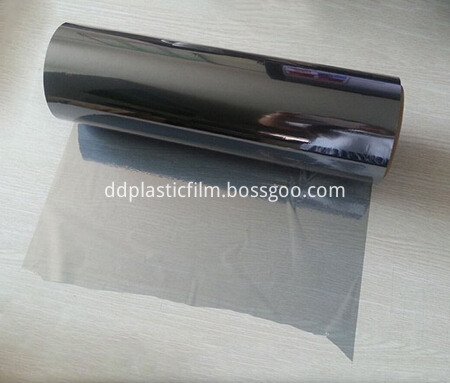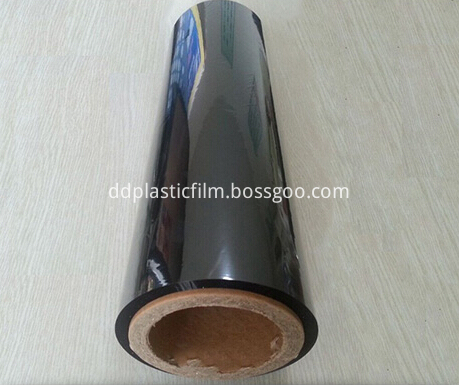In the past, the four-color printed black did not replace the intermediate gray of the three-primary color, but just superimposed another black on the three-primary color. This printing method is not suitable for the single-color or two-color offset presses, and the printing speed is not too fast. If it can still be adapted, on today's four-color high-speed offset presses, under wet and wet printing conditions, it is not suitable. . In the dark area, four ink colors are overprinted, and the coverage of the total dot area can be as high as 360%, especially the third and fourth colors of the post-printing. When the ink of the previous color is too late to be fixed, it is printed again. When the next printing blanket and the printed sheet are imprinted, the ink on the previous printing sheet is likely to be transferred from the surface of the printed sheet against the direction of ink transfer to the blanket of the next printing sheet. There is serious interference with the ink color in the ink, which results in contamination of the color of the picture, which is called reverse transfer. The inadaptability of the high-coverage coverage of four-color inks in today's high-speed four-color wet press wet conditions forces people to reexamine the role of black plates. Underground color removal technology is promoted in this case.
1. Definition of background color removal
The so-called background color does not specifically refer to the black which is overprinted by equal amounts of the three primary colors, but also includes the black component contained in the color. From a printing point of view, any color, as long as its lightness is not the highest, or it has a certain darkness, then it must contain a certain black component, this black component is the background color of this color. Any part of the background color that is overprinted by the three primary colors is replaced by black, which is the background color removal, which is represented by UCR (under color remove).
According to the color mixing law of the subtractive color method, any two primary colors of the three primary colors yellow, magenta, and cyan are overprinted, and the hue of the resulting intermediate color must be the complementary color of the third primary color. According to the law of complementary colors, once this third primary color is overprinted with the previous intermediate color, it will inevitably produce a neutral black-gray color. If the dot coverage of the three primary colors is unequal, then it is also possible to separate from them the three equivalent overprint rates limited to the lowest of the three equivalents. The result of these three equal amounts of synthesis must be a neutral dark gray, that is, the background color.
2. Analysis of background color removal
In the case that the coverage of the three primary colors is not equal, the analysis of the background color in the combined color of the three primary colors is shown in Figure 1.
First of all, the coverage of the dot area of ​​each color version in the three primary colors is 25%, and they are combined into gray in equal amounts. The remaining 65% yellow and 55% magenta are synthesized into orange-red. The synthetic color is equivalent to the superposition of orange-red and 25% gray, so the brightness of the orange-red overprinted by the three primary colors is not very high.
It is also the case that the dot coverage of the two primary colors is equal and low, and the dot coverage of the other primary color is higher, as shown in Figure 2. The coverage area of ​​yellow and magenta is 50%, while that of cyan is 90%. It can be analyzed in this way, and 50% of the dot area is also taken from cyan. At this time, yellow, magenta, and cyan all form a medium-black background color with 50%, and 40% of cyan is left overlapping this background color He finally got a teal color.
From the analysis of the above two examples, it can be seen that all the composite colors synthesized from the three primary colors must contain a background color, the synthesized color is a color with lower brightness, and the single primary color and intermediate color do not include Background.
After the background color is removed, since the dot coverage of the three colors decreases at the same time, the total coverage of the dot area per unit area will be greatly reduced. From the perspective of improving the printability of wet-pressed wet inks alone, it is advantageous to reduce the total area coverage, but it is not that the lower the total coverage, the better. The substrate used now-the surface of the paper cannot be very smooth, there are always pits and capillary holes. After the paper surface is covered with ink, the ink must be filled with these concave holes and capillary holes, and then a smooth ink film layer can be formed on it. If the total coverage is too low, it is not enough to form a smooth ink film layer , It will reduce the highest density of colors and the vividness of colors. The comprehensive advantages and disadvantages are generally not 100% background color removal, but a proper control of a removal amount, about 50%. If the paper smoothness is high, the removal amount can reach 60%; if the paper smoothness is low, the removal amount can be as low as 30%.
After the background color is removed, the amount of black ink of the corresponding background color should be increased to undertake the task of determining the color brightness undertaken by the original background color. The higher the percentage of background color removal, the longer the tone of the corresponding black version.
3. The positive significance of background color removal
1. If you don't need to remove the background color for good tone reduction, the total coverage of the dots in the unit area cannot be reduced in the dark tone part of the screen. The background color is produced by the overprint of three colors or four colors. As a result, the dark areas are almost solid. Although the contrast of the picture increases, the dark levels cannot appear, and the outlines in the subtle areas are blurred. With background color removal, these problems are easy to solve. As the tone of the black version of the dark area is strengthened, the level of the dark area is mainly expressed by the black version, so that the level of the dark area of ​​the original is well expressed.
2. Better printing suitability. In actual printing, when the total dot coverage exceeds 300%, the ink delivery will deteriorate, and dot expansion, reverse transfer and other defects are more likely to occur; when the total coverage is less than 200%, And because of the influence of microscopic unevenness and capillary holes on the surface of the paper, the ink layer appears to have light scattering, reducing the color density and color vividness. Generally speaking, it is better to control the total coverage of four-color printing dots between 200% and 300%. This can be done by removing the background color, making the printing more adaptable.
3. More suitable for the production needs of digital proofing
Today's digital proofing mostly uses economical and practical inkjet printing methods. We know that inkjet imaging has higher requirements on paper ink, so the surface coating of proofing paper is particularly important. It is necessary to ensure that the paper can absorb a certain amount of ink, but also to maintain a certain amount of ink droplet diffusion. In fact, each proofing paper has a saturation limit to absorb the amount of ink. When this limit is exceeded, the ink droplet diffusion will It can't be controlled very well, which leads to the gradation of the dark tone parts of the image with a large amount of ink, which seriously affects the image accuracy. In this regard, some digital proofing management software such as BlackMagic has applied the principle of background color removal to solve this problem. The total coverage of BlackMagic's dots is generally controlled within 260%, (depending on the proofing paper and ink, but it is slightly lower than that of the printing), through the successful application of the background color removal principle, the use of inkjet method to simulate the high line number amplitude modulation dots is solved The problem.
In addition, the application of background color removal increases the stability of neutral gray, saves expensive inks and printing inks, and makes the expansion of the dots well controlled. After successful application, it will find that its effect is far more than these.
Semi Metallized Pet Film
Other name: Semi metallized PET FILM, Semi transparent PET film,150A electric film ect.
Specification:
Thickness:12MIC, 24MIC,50MIC ,100MIC etc
Width:<2500mm, Other width accept customized
Low OD: 150A , 240A, Other thickness accept OEM
Application :For lamination , For shielding bag, For electric ect.


Shielding Plastic Film,Mylar Electronic Film,Semi Transparent Mylar Film,Pet Electronic Film
Shijiazhuang dadao Packaging materials Co , https://www.ddplasticfilm.com